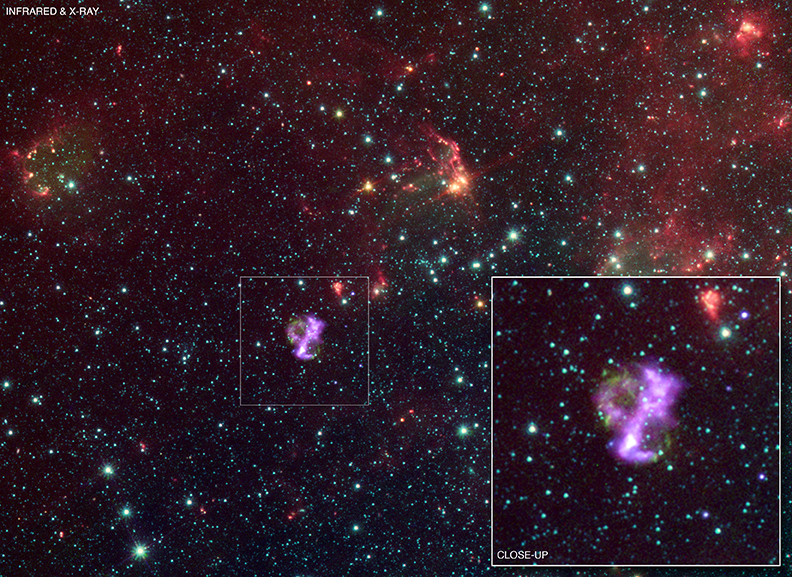
 Credit: X-ray (NASA/CXC/Penn State/S.Park & J.Lee); IR (NASA/JPL-Caltech)
Credit: X-ray (NASA/CXC/Penn State/S.Park & J.Lee); IR (NASA/JPL-Caltech)
What Broke the Ball?
Although stars can be flattened by rotation, in general they're pretty spherical. The Sun, for example, deviates from being a perfect sphere, but only by about 0.001%. So when stars blow up, they are expected to blow up pretty equally in all directions. And round supernova remnants like Tycho, Kepler and Cas A bear this out. However such is not always the case. Take SN 0104-72.3, for instance. This supernova remnant in the Small Magellanic Cloud, probably produced by the thermonuclear destruction of a white dwarf star, doesn't look round at all. This supernova is shown above in a composite image in which red and green colors represent infrared emission observed by the Spitzer Space Telescope, while purple colors represent X-ray emission observed by the Chandra X-ray Observatory. The X-ray image apparently shows two "lobes" emanating from the center of the nebula. Astronomers are not sure if these lobes are the remnants of 2 oppositely-directed jets produced during the explosion of the star, or if they were produced by the pre-structuring of the circumstellar medium by the star in the millennia before the explosion.
Published: June 22, 2009
<
HEA Dictionary ● Archive
● Search HEAPOW
● Other Languages
● HEAPOW on Facebook
● Download all Images
● Education ● HEAD
>
Each week the HEASARC
brings you new, exciting and beautiful images from X-ray and Gamma ray
astronomy. Check back each week and be sure to check out the HEAPOW archive!
Page Author: Dr. Michael F. Corcoran
Last modified Monday, 26-Feb-2024 17:47:01 EST


